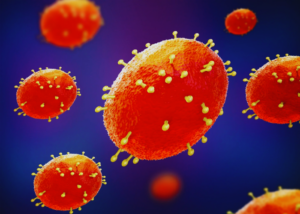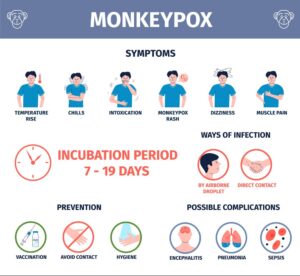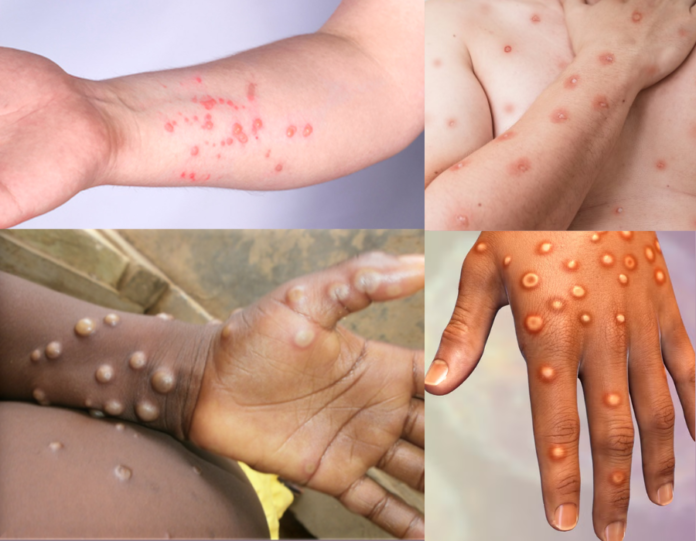In response to the growing concerns over Monkeypox Virus in Pakistan, the Prime Minister Shehbaz Sharif chaired an urgent meeting to assess and manage the outbreak. The meeting was convened to discuss preventive measures and formulate an effective response strategy, focusing on the immediate containment of the Monkeypox virus (Clade-II) that has recently surfaced in the country.
Cases Update on Monkeypox Virus in Pakistan
According to health authorities, Pakistan has confirmed a total of Six Monkeypox cases across the nation, with fourteen Suspected Cases currently under surveillance and investigation. The Ministry of Health has stated that these numbers highlight the need for prompt action and robust healthcare measures to prevent further spread. This toll has raised after first case of Monkeypox found in KP. An emergency response protocol has been initiated to tackle the rising threat, and the situation is being closely monitored.

What is Monkeypox (Clade-II)?
Monkeypox is a zoonotic viral infection caused by the Monkeypox virus, which is part of the Orthopoxvirus genus. The virus is transmitted to humans through close contact with infected individuals, animals, or contaminated materials. Clade-II, one of the two genetic variants of the Monkeypox virus, is known for its higher transmission rates but generally results in less severe illness compared to other strains.
Monkeypox Symptoms
Monkeypox symptoms typically appear 6 to 13 days after exposure to the virus, although the incubation period can range from 7 to 19 days or more. The symptoms can be divided into two stages:

- Initial Symptoms (Prodromal Phase):
- Fever: Often the first sign, with temperatures rising as high as 101–104°F (38.5–40°C).
- Headache: Intense, persistent headaches.
- Muscle aches (Myalgia): Body pains, particularly in the back.
- Chills and fatigue: Extreme tiredness and cold shivers.
- Swollen lymph nodes (Lymphadenopathy): Enlarged lymph nodes in the neck, armpits, or groin, which differentiates Monkeypox from similar illnesses like chickenpox or smallpox.
2. Rash Development:
- Day 1–3 after fever onset: A rash typically appears, starting on the face and then spreading to other parts of the body, including the palms of the hands, soles of the feet, and mucous membranes (inside the mouth, eyes, or genital area).
- Stages of the rash: The rash evolves from flat red spots to raised bumps, followed by fluid-filled blisters, pus-filled lesions, and eventually crusts that fall off.
- The rash can be painful and itchy, lasting for 2 to 4 weeks before healing completely.
Precautions for Suspected or Infected Patients at Home
If you or someone in your household shows signs of Monkeypox, it’s important to take immediate precautions to prevent spreading the virus to others. Here are some essential home care tips for managing Monkeypox patients:
- Isolation of the Infected Person:
- The infected individual should stay in a separate room away from other household members to avoid transmission.
- Use a separate bathroom if possible. If sharing is necessary, disinfect the surfaces frequently.
- Limit visitors and avoid any unnecessary travel.
2. Personal Protective Equipment (PPE):
- Caregivers should wear disposable gloves, a mask, and avoid direct contact with the patient’s skin or body fluids.
- The patient should also wear a mask, especially when in shared spaces, to prevent the spread of respiratory droplets.
3. Proper Hygiene Practices:
- The infected person should maintain good hand hygiene by washing hands frequently with soap and water or using an alcohol-based hand sanitizer.
- All clothes, bedding, towels, and eating utensils used by the patient should be washed separately in hot water.
4. Disinfection of Surfaces:
- Regularly clean and disinfect surfaces that the infected person has come into contact with, using an approved disinfectant.
- Pay special attention to frequently touched items like doorknobs, light switches, and bathroom surfaces.
5. Caring for Skin and Rash:
- Keep the skin clean and dry to prevent secondary infections. For rashes, calamine lotion or other soothing ointments can provide relief from itching.
- Do not touch, scratch, or pop the lesions to avoid spreading the virus further or causing scarring.
6. Hydration and Nutrition:
- Ensure that the infected person stays well-hydrated, drinking plenty of water and fluids to prevent dehydration, especially if they have a fever.
- Provide a nutritious diet rich in vitamins and minerals to support the immune system during recovery.
7. Monitoring for Severe Symptoms:
- Keep an eye out for signs of severe illness, such as difficulty breathing, chest pain, confusion, or worsening skin infections. If such case arises, get immediate medical check up.
- Regularly check temperature and general health conditions to monitor recovery.
8. Avoid Physical Contact with Pets:
- Monkeypox can also spread to animals, especially rodents, so it is important to keep infected patients away from household pets.
Government’s Response and Preventive Measures
The Prime Minister Shehbaz Sharif emphasized the need for immediate action. He has directed health officials to ramp up public awareness campaigns, enhance the availability of testing facilities, and provide hospitals with adequate medical supplies to curb the spread of Monkeypox virus in Pakistan. The following key measures were discussed during the emergency meeting:
- Awareness and Education Campaigns: Public awareness campaigns are being launched across the country to educate citizens about Monkeypox symptoms, transmission routes, and prevention strategies. Citizens are being advised to maintain hygiene, avoid close contact with infected individuals, and seek medical attention if symptoms appear.
- Strict Border Surveillance: The government has heightened surveillance at all entry points, including airports, seaports, and border crossings, to prevent further importation of the virus into Pakistan. Any travelers showing symptoms are being quarantined and tested immediately.
- Hospital Preparedness: Hospitals across the country have been put on high alert, with isolation wards being prepared to manage Monkeypox patients effectively. The Prime Minister has also urged healthcare professionals to ensure the availability of adequate personal protective equipment (PPE) for frontline workers.
- Case Tracking and Management: The Ministry of Health has set up a robust system for tracking and managing confirmed and suspected cases of Monkeypox. The goal is to prevent localized outbreaks and minimize the virus’s spread within communities.
Public Advisory
In light of the recent developments, the Ministry of Health has issued an advisory urging the public to remain vigilant. Individuals experiencing flu-like symptoms, swollen lymph nodes, or rashes are encouraged to seek immediate medical attention. Early diagnosis and isolation are key to curbing the spread of the virus.
As the situation evolves, the Pakistani government continues to update its response strategy based on real-time data. Previously, All Airports were issued Guidelines and now Health officials assure the public that all necessary precautions are being taken to protect citizens from the potential spread of Monkeypox.
Helpline 1166 Activated for Public Assistance
As part of the national response plan, the government has launched a 24/7 Helpline 1166 to provide immediate assistance and guidance regarding Monkeypox. The helpline aims to offer critical information to the public, including symptoms, preventive measures, and steps to be taken if infection is suspected. The service is available across the country, ensuring that citizens have access to support regardless of their location.


